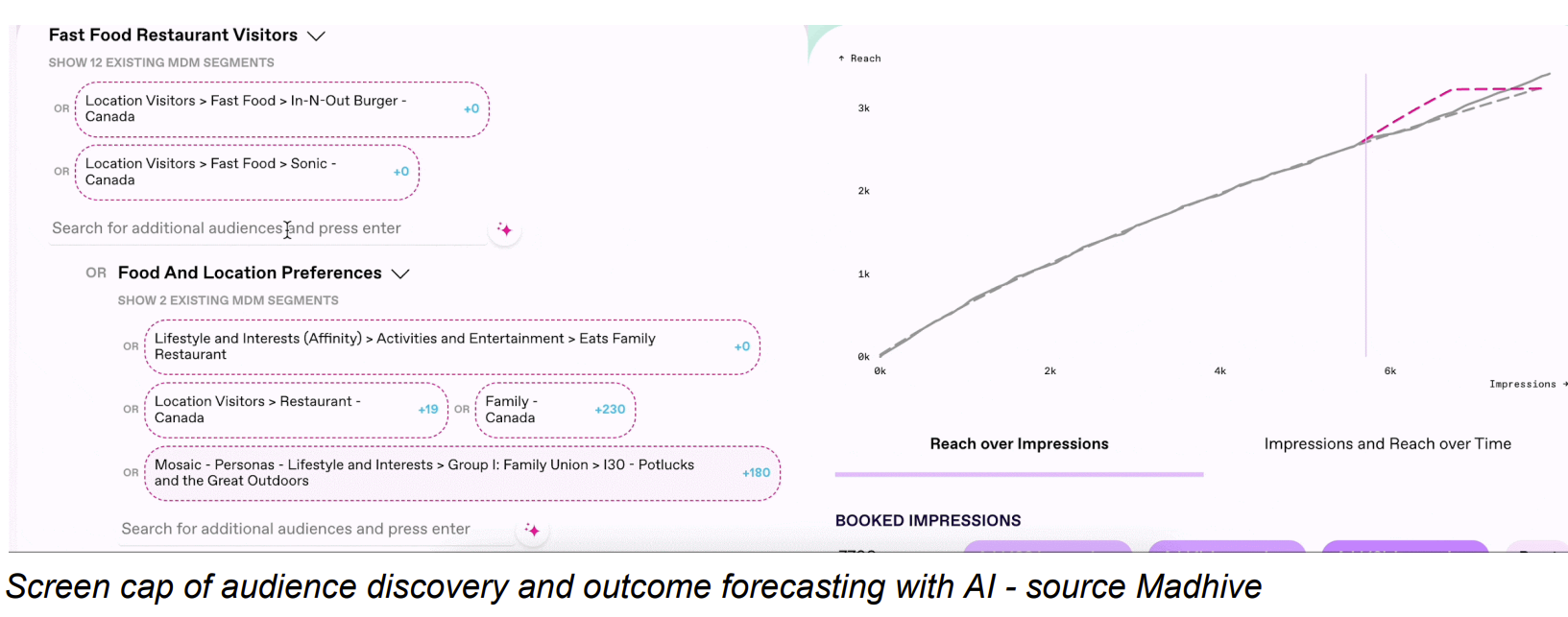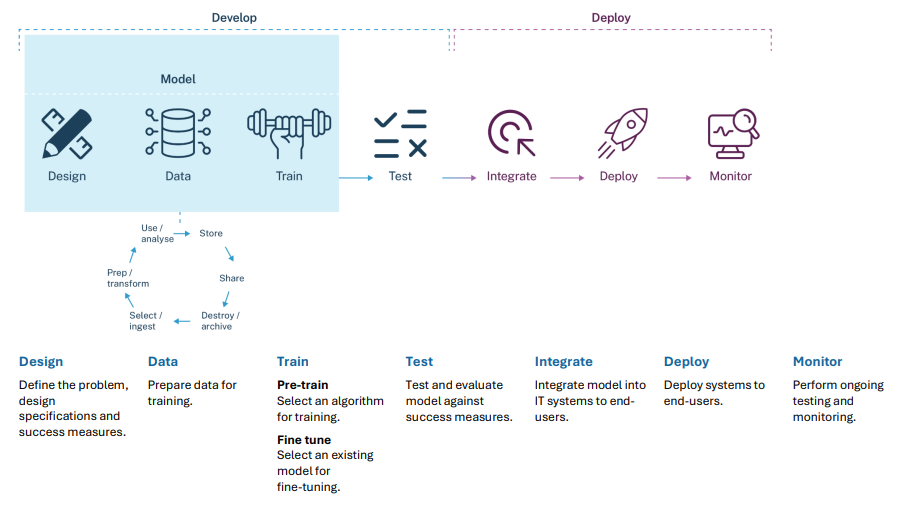This week we have seen two separate and quite distinct outputs to support industry in leveraging the capabilities of machine learning and/or artificial intelligence, as well as some other potential use cases.
The IAB Tech Lab has released a primer document for AI designed to provide definitions and advertising related use cases. Then locally the OAIC (Office of the Australian Information Commissioner) here in Australia has published guidance on AI to help provide privacy-related guidance and key considerations for the usage of any commercially available AI products.
We’ve summarised some of the key content from both of these below…and recommend reading them in tandem – leveraging the use cases for advertising from IAB Tech Lab and then following the guidance from the OAIC in relation to how you might leverage AI responsibly here in Australia.
Also to read a recent update from us on AI Review, Fair Trading Practices & Privacy Reform please just click here
AI in Advertising Primer (IAB Tech Lab)
IAB Tech Lab this week released a primer document as an informational guide to understanding Artificial Intelligence and functions to help businesses evaluate different AI use cases against their own brand and business requirements.
The document is essentially in two parts, firstly a set of definitions and information on the different types of AI. There are also use cases for LLM usage and improvements for different creative assets.

The second half of the primer looks at specific use cases for advertising and industry, and is separated out into sections, as per the below.
- Advertisers & Marketers – speeds up creative work, helps generates innovative ideas, and enhances campaign performance. AI also helps marketers develop precise strategies and tailor campaigns to individual consumers whilst focusing on privacy-friendly technology, thereby enabling advertisers to achieve campaign goals using less personal information.
- Publishers & Media Owners – rather than a one-size-fits-all approach, AI is enabling the creation of more personalised and immersive experiences. By analysing individual preferences and contexts, AI can generate tailored content, ensuring that each viewer receives content that perfectly matches their interests. This shift towards personalised media represents a significant evolution in the way consumers interact with media.
- Ad Tech – AI can extract deeper insights from data, enabling more precise audience targeting, and automating complex tasks. By analysing vast datasets, AI can also identify patterns and trends that were previously undetectable, leading to more effective advertising campaigns. The integration of generative AI further accelerates this transformation, enabling personalised content delivery, automated data analysis, and privacy-preserving ad decisions.
- Addressability / Targeting – the key areas of benefit here are across workflow automation, real time bidding, segmentation and identification. AI is driving efficiencies in advertising and marketing by automating campaign creation, optimising real-time bidding, and refining audience segmentation. By processing vast amounts of data, AI can automate tasks like campaign setup, real-time bid adjustments, and audience identification. This leads to more efficient campaigns, increased ad relevance, and improved returns on investment. Additionally, AI enables consistent user experiences across devices by identifying and tracking users’ preferences and behaviours.

- Creative – massive improvements in automating creative analysis, optimising video content, and enabling generative AI tools. By analysing millions of ad units, AI can identify trends, understand creative impact, and provide insights to enhance future campaigns. Machine learning is also streamlining video production by adding motion to still images and editing longer-form content. Generative AI is emerging as a powerful tool, allowing for rapid prototyping, language translation, and the creation of brand-specific content. As AI continues to advance, it will significantly reduce costs and increase efficiency.
- Content Creation – AI-powered tools are making content creation easier than ever before. LLMs and image generation models allow for the simple creation of articles, music, and speech through text prompts. While these tools offer significant benefits, organisations are carefully considering their use and developing policies to ensure alignment with their values and business goals. AI-generated audio and speech reduce costs, increase accessibility, and accelerate production time, making it easier for a wider range of creators to produce professional-quality content.
- Copyright – over the next few years copyright issues will likely vary by jurisdiction and may depend upon outcomes from court cases contemplating copyright ownership of AI generated content and the use of copyrighted content to train AI models.
- Measurement & Insights – quantifying complex aspects like viewability and fraud detection, and addressing challenges posed by privacy changes like Apple’s ATT. By analysing limited deterministic data, machine learning also enables probabilistic attribution, providing insights into campaign performance. Furthermore, AI is accelerating the insights process. Natural language queries allow for faster and more efficient data analysis. AI can autonomously test hypotheses, identify trends, and derive valuable insights from campaign data, aiding in future targeting and addressability strategies.
To access the IAB Tech Lab’s AI primer document simply CLICK HERE
OAIC guidance on AI
The OAIC have recently published two guides for local businesses designed to clearly articulate how Australian privacy law applies to artificial intelligence (AI) and set out the regulator’s expectations. The guidance we found most interesting was one written to make it easier for businesses to comply with their privacy obligations when using commercially available AI products and help them to select an appropriate product.
Given the increase in the usage of AI this is timely guidance. The top 5 takeaways from this guidance is below:
- Privacy obligations will apply to any personal information input into an AI system, as well as the output data generated by AI (where it contains personal information).
- Businesses should update their privacy policies and notifications with clear and transparent information about their use of AI, including ensuring that any public facing AI tools (such as chatbots) are clearly identified as such to external users such as customers.
- If AI systems are used to generate or infer personal information, including images, this is a collection of personal information and must comply with APP 3.
- If personal information is being input into an AI system, APP 6 requires entities to only use or disclose the information for the primary purpose for which it was collected, unless they have consent or can establish the secondary use would be reasonably expected by the individual, and is related (or directly related, for sensitive information) to the primary purpose.
- As a matter of best practice, the OAIC recommends that organisations do not enter personal information, and particularly sensitive information, into publicly available generative AI tools, due to the significant and complex privacy risks involved.
The guidance aims to highlight the key privacy considerations and APP requirements that any business should have in mind when selecting and using an AI product.

The guidance also includes privacy considerations when looking to select a commercially available AI product.
- What should organisations consider when selecting an AI product?
- What are the key privacy risks when using AI?
- What transparency and governance measures are needed?
- What ongoing assurance processes are needed?
- Has the system been tested and proven for your entity’s intended uses?
- Do you understand the limitations of the product and whether there are mitigations or safeguards in place?
- Is the intended use of the AI system likely to be a high privacy risk activity, such as making decisions that may have a legal or similarly significant effect on an individual’s rights?
- If there is a high privacy risk, will the product be appropriate and produce accurate outputs? Will your organisation be able to understand and explain these outputs and how the system works?
To access this guidance simply click the link below.